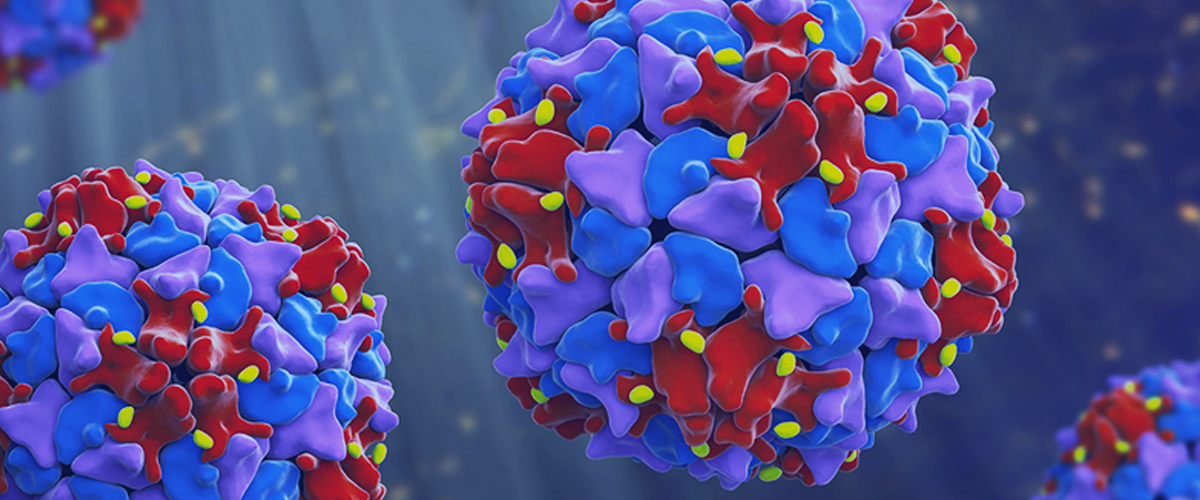What You Need to Know About Polio and How to Protect Yourself
Is polio still around and spreading? Two infectious disease experts share an update on the virus and explain how to stay safe.

Since the discovery of the polio vaccine in 1955, polio had become nearly eliminated around the globe, but today, the virus is back in the news and posing a health threat. In August 2025, the Centers for Disease Control and Prevention (CDC) issued a Level 2 travel advisory for five countries in Europe where polio is spreading (United Kingdom, Spain, Germany, Poland, and Finland).
Polio is a dangerous infectious disease that can attack the nervous system and cause muscle weakness and paralysis. Millions of children and adults had polio in the first half of the 20th century before a vaccine was introduced in 1955 and cases began to plummet.
“In the U.S., the last cases of wild poliovirus that originated in this country (that is, were not brought into the country by travelers) occurred in 1979,” says Dr. Yoko Furuya, chief epidemiologist and medical director of Infection Prevention and Control for NewYork-Presbyterian Hospital.

Dr. Yoko Furuya
But in July of 2022, health officials in New York identified a case of paralytic polio in an unvaccinated person in Rockland County. Wastewater samples suggested the virus was spreading in parts of New York state. The CDC’s recent advisory about polio in wastewater in Europe is putting the disease on our radar again.
“Persistent wastewater detection could reflect person-to-person transmission of poliovirus in the community, but it’s not an accurate measure of how many people may be infected,” says Dr. Karen Acker, a pediatric infectious diseases specialist at NewYork-Presbyterian Komansky Children’s Hospital.
Health Matters asked Dr. Furuya and Dr. Acker what we need to know about polio, whether it’s safe to travel to Europe now, and how to protect yourself and your children from the disease.
What is polio — and how does it spread?

Dr. Karen Acker
Dr. Furuya: Polio, or poliomyelitis, is a very contagious disease caused by a virus that lives in people’s gut. This virus can spread through contact with the stool of an infected person, as well as sometimes from droplets from an infected person sneezing or coughing. If you get the stool or droplets on your hands and then touch your mouth, you can get infected in what we call “fecal-oral” transmission.
What are common polio symptoms?
Dr. Furuya: More than 70% of people who get infected with the poliovirus actually have no symptoms, but they can still shed and spread the virus to others. About 1 in 4 infected people get flu-like symptoms such as fever, sore throat, nausea, vomiting, or abdominal pain; these symptoms usually only last for a few days and then go away on their own.
Dr. Acker: More rarely, people get more severe symptoms that affect the brain and spinal cord, causing meningitis (inflammation of the fluid around the brain and spinal cord) and weakness and paralysis of the arms and/or legs (called acute flaccid paralysis).
Why is polio spreading now — wasn’t it already eradicated?
Dr. Furuya: Polio has not been completely eradicated. Globally, two of the three strains of wild poliovirus (types 2 and 3) have been eradicated, and the remaining strain of wild poliovirus (type 1) is endemic (meaning it’s always present) in only two countries, Pakistan and Afghanistan.
But there are still polio outbreaks, such as the one in Europe. They’re usually due to a strain of poliovirus that is given as part of the oral polio vaccine. Since 2000, the U.S has only been vaccinating people against polio using the inactivated polio vaccine (IPV), which is an injectable vaccine. However, many other countries use the oral polio vaccine (OPV), which contains live, weakened polioviruses. When people receive OPV, the live, weakened polioviruses can be transmitted to other people. Normally this doesn’t cause problems if everyone else is vaccinated as well, but if there are enough unvaccinated or undervaccinated people around, and the weakened poliovirus from the vaccine circulates in that community for long enough, it can actually revert to a form that can cause paralytic disease.
How can you protect yourself from polio?
Dr. Furuya: The best way to protect yourself and your family from polio is to get vaccinated and ensure your children have been vaccinated. The IPV vaccine is extremely safe and effective; the viruses in IPV have been chemically killed so they cannot replicate, cause transmission, or cause disease. Because of how rare polio was in the U.S. until recently, it used to be that adults who were unvaccinated, undervaccinated, or not known to be vaccinated were only recommended to receive the IPV vaccine if they were considered to be at higher risk. However, because of the recently identified paralytic polio case in 2022, along with ongoing global transmission of polio and the risk that it could continue to be imported by travel into the U.S., CDC’s Advisory Committee on Immunization Practices (ACIP) met in 2023 and modified their recommendation to say that all adults not known to be fully vaccinated against polio should complete a primary polio vaccination series with IPV.
The best way to protect yourself and your family from polio is to get vaccinated and ensure your children have been vaccinated.
Dr. Yoko Furuya
What is the polio vaccine schedule for children?
Dr. Acker: Children should be vaccinated according to the four-dose schedule. It’s essential to not delay any of the doses. The recommended polio vaccine schedule from the American Academy of Pediatrics is:
- 2 months
- 4 months
- 6 months
- 4 through 6 years
The most common side effects are pain at the site of injection (occurring in 3% to 18%). Severe side effects are extremely rare. If you are fully vaccinated, you can feel reassured that you are safe against paralysis from polio.
What other steps can you take to stay safe?
Dr. Furuya: Washing your hands is a good way to protect yourself from the bacteria and viruses around you. Alcohol-based hand sanitizers have lower efficacy against non-enveloped viruses like poliovirus, but washing hands with soap and water for at least 20 seconds is effective at removing the virus from your hands. It’s especially important after being in public places and before you eat.
Dr. Acker: If soap and water are not available, use an alcohol-based sanitizer with at least 60% alcohol.
If you were vaccinated as a child, are you still protected as an adult?
Dr. Furuya: Getting the full polio vaccine series as a child should provide long-lasting and probably lifelong immunity against paralysis from polio, although we can’t be 100% certain. However, protection from getting a milder infection may not be lifelong.
Are kids who aren’t fully immunized yet at risk?
Dr. Acker: Kids who aren’t fully immunized yet may be at some risk, although 90% of people who received IPV are immune after two doses and 99% are immune after three doses, so most children who received their vaccine series on schedule should be protected, even before they receive their fourth dose at age 4 to 6 years.
Who is at risk of catching polio?
Dr. Furuya: People at higher risk for infection or paralysis include healthcare providers who have close contact with patients in a community with a polio outbreak, laboratory workers handling specimens that may contain poliovirus, and travelers to areas where poliomyelitis is endemic (Afghanistan and Pakistan) or epidemic, including some countries in Africa, Asia, and Europe.
If you aren’t sure if you were vaccinated, should you get vaccinated again?
Dr. Furuya: Adults who received their routine childhood vaccinations should have already be given the polio vaccine. In the U.S., the polio vaccine is required to attend public school and even many private schools.
Dr. Acker: If you’re not sure if you have been vaccinated, you should get a three-dose series of the polio vaccine. Children younger than 4 years old, on the other hand, should receive a four-dose series of the polio vaccine. Some people who are fully vaccinated may be eligible for a booster dose.
Who should get a polio booster?
Dr. Acker: Currently, the CDC is recommending a single booster dose for lab and healthcare providers who handle specimens that might contain polioviruses and for healthcare providers who are treating patients in a community with a polio outbreak.
Should you take any precautions before traveling to Europe or other countries where polio is spreading?
According to the CDC, you should make sure you are fully vaccinated against polio before visiting those countries. Adults who’ve received the complete series as children have the option of also getting a polio booster for additional protection.
